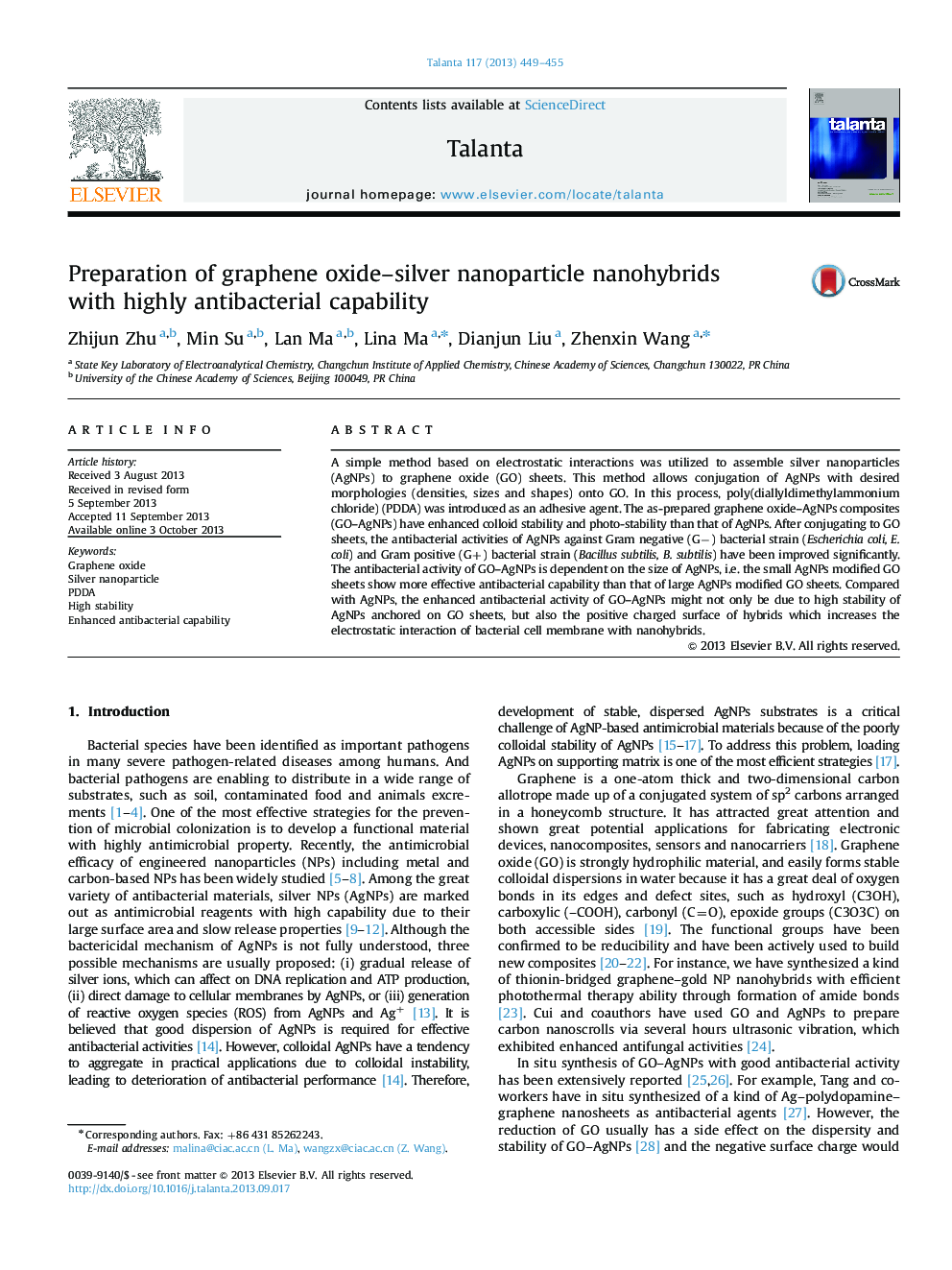| Article ID | Journal | Published Year | Pages | File Type |
|---|---|---|---|---|
| 7682372 | Talanta | 2013 | 7 Pages |
Abstract
A simple method based on electrostatic interactions was utilized to assemble silver nanoparticles (AgNPs) to graphene oxide (GO) sheets. This method allows conjugation of AgNPs with desired morphologies (densities, sizes and shapes) onto GO. In this process, poly(diallyldimethylammonium chloride) (PDDA) was introduced as an adhesive agent. The as-prepared graphene oxide-AgNPs composites (GO-AgNPs) have enhanced colloid stability and photo-stability than that of AgNPs. After conjugating to GO sheets, the antibacterial activities of AgNPs against Gram negative (Gâ) bacterial strain (Escherichia coli, E. coli) and Gram positive (G+) bacterial strain (Bacillus subtilis, B. subtilis) have been improved significantly. The antibacterial activity of GO-AgNPs is dependent on the size of AgNPs, i.e. the small AgNPs modified GO sheets show more effective antibacterial capability than that of large AgNPs modified GO sheets. Compared with AgNPs, the enhanced antibacterial activity of GO-AgNPs might not only be due to high stability of AgNPs anchored on GO sheets, but also the positive charged surface of hybrids which increases the electrostatic interaction of bacterial cell membrane with nanohybrids.
Related Topics
Physical Sciences and Engineering
Chemistry
Analytical Chemistry
Authors
Zhijun Zhu, Min Su, Lan Ma, Lina Ma, Dianjun Liu, Zhenxin Wang,
